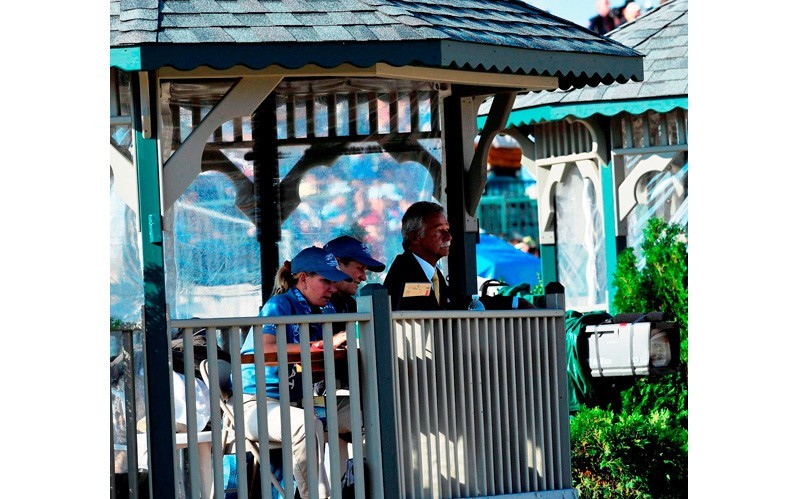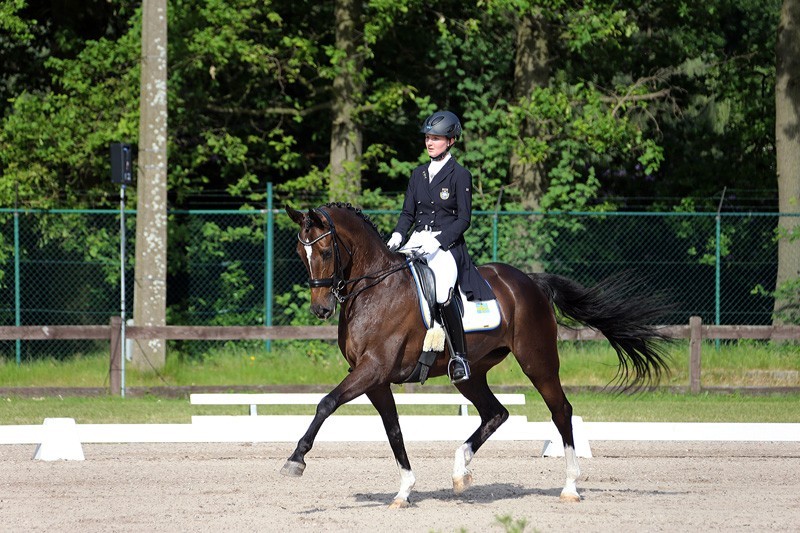
Some years ago, a French lady in a conversation with a friend of mine requested his help to acquire a horse in Portugal for the practice of dressage. My friend did it willingly; however, he asked for clarification of the following question: is it for participation dressage or competition dressage? The doubt presented may seem to be derogatory, but in fact, in my opinion, it is not, it is perfectly pertinent.
According to the Portuguese Dressage Regulation (art 401º), the goals and principles of this regulation are, among others, as follows:
1. Establish the general norms that regulate the activities related to the teaching of competition;
2. To guide, in a rational way, the preparation of the high competition horse / athlete, having in mind the national representation at the highest level.
3. To help the athletes, placing at their disposal a didactic Regulation that enables the progressive and careful teaching of their horses.
It is thus enshrined in the regulation that the practice of the teaching can include two distinct strands, I would call it here, “two distinct championships”. That is, the championship of those who have horses with high aptitude for the discipline and intend to practice it with a view to the national representation in the international competition and the championship of those who, not having this type of animals, are included in point 4 looking for fun and trying to evolve in the practice of a sports modality according to their liking. Nothing more dignified, salutary and praiseworthy.
If we make a rough comparison with the practice of other sports, the car racing, it is known that at the level of the high competition the factory teams drive with their highly sophisticated cars. Then, there are the other drivers, some of them very good, but whose cars are less competitive. However, the public awaits them and applauds in recognition of their quality. In addition, there are specific awards, such as the trophies established for a particular type of car, or the best Portuguese driver.
Going back to dressage, so far everything that has been described, and in this particular case, is running smoothly on “hoofs”. However, since the afore mentioned “championships” are not formally established, there is often a third category composed of those sets, whose animal belongs to the participation dressage championship, but the rider is clearly convinced that he is competing in the championship of competition dressage. That’s where things get complicated …
There are still cases when the horse is definitely not appropriate for dressage, but I am already excluding these situations that I consider should have another type of treatment.
We all know that most of these situations are due to “excess” enthusiasm and some lack of knowledge.
My college professor, Doctor Manuel Braga da Cruz used to say that when the student thinks he knows everything, he knows nothing. When the student begins to distrust what he knows, it is because, indeed, he begins to know something.
I have met a number of new riders, recently arrived at the practice of riding, which driven by enthusiasm and guided by their feeling for the equine selection, decide to buy a 2 or 3 year old foal which, at the age of 4, will be able to compete at the highest level. I always think: Ignorance is bliss! The work of the foal begins then, oriented towards grade eight, never less than that, of course, for a future champion. With an intensive “horse training”, more vitamin supplements are given to boost up the athletic performance of the poor animal. Extra quality material to positively influence the judges is acquired. Bandages with the national flag or matching colours with the saddle-cloth and a variety panoply of other adornments allusive to the Team are exhibited.
No harm comes to the world because of this, and that’s why I say “ignorance is bliss”. Were it not for the discouragement that these situations usually generate, when the true reality comes up, usually endured in silence or with some tattered excuses, such situations, in my view, could be perfectly avoided with a little more discretion and knowledge of the contours of the discipline and the physical and psychic characteristics needed for a dressage horse. In fact, these situations of riders who do not know the real athletic condition of their horse and how to get the best of its performance in a test often have repercussions at various levels of competition. At least, they will have the “merit” of serving to exercise the analytical capacity of the judges.
I’m not a judge and I’m not going to meddle into someone else’s affairs. I just wanted to give evidence of the following. Recently I signed up for a workshop with an International Teaching Judge because I like to learn and because I wanted to try sitting on the other side of the barricade and listen to the thinking of those who have to play that role. I found from the Judge an enormous willingness to help the riders in a positive way to improve their performance, rewarding those who are clearly on the right track (bases of the training scale), but this will is guided by a set of principles that impose the justice of judgment.
In spite of the clear explanations, however, there is always some doubt as to which is the best rating to give to a rider who rides with the awareness that his horse belongs to the Participation Dressage Championship, but who also rides it, in the best possible way, according to the training scale. Of course, the concept of “the best way” is very subjective and, for some, difficult to verify. I accept the argument perfectly, except that all other appraisals are not free from subjectivity either. Some, more than others logically.
If riders and coaches, when working a horse candidate for the championship of participation dressage, want to do it with the necessary dignity to the good practice of the riding they have to make many and difficult choices to try to obtain the best performance of the exercise without harming the bases of the training scale. We could give many examples here: how much wider can I open up my horse’s gait; how high can I impose vertical balance on my horse; how far can I request this or that bending; etc.

My question is: if a rider who is able to have this perception of the limits of the capacity of his horse, will he not deserve a bonus in the rate he gets? I do not want to argue whether or not this distinction is being made. I am well aware that the system of judgment has its method of thought and evaluation, and that good judges strive to apply it and improve it. But I also know how difficult it is for riders to make such decisions.
Recently the FEI approved a significant change in the method of judging in dressage by abolishing the so-called “collective marks” almost entirely, since only the rider’s rate have remained, and the rates for Paces, Impulsion, Submission were withdrawn. As far as I know, the decision has not been very peaceful amongst the milieu, but again I do not want to discuss this issue. In my opinion, I can even understand this decision at international level, but for the national level I think those rates are missing. And they are necessary, because they are an excellent instrument for the judges to be able to distinguish the horsemen I mentioned above or, on the other hand, to give indications to those who, on the whole of their test do not present themselves so well, despite mounting higher quality horses.
Dr. Henrique Cymbron.
